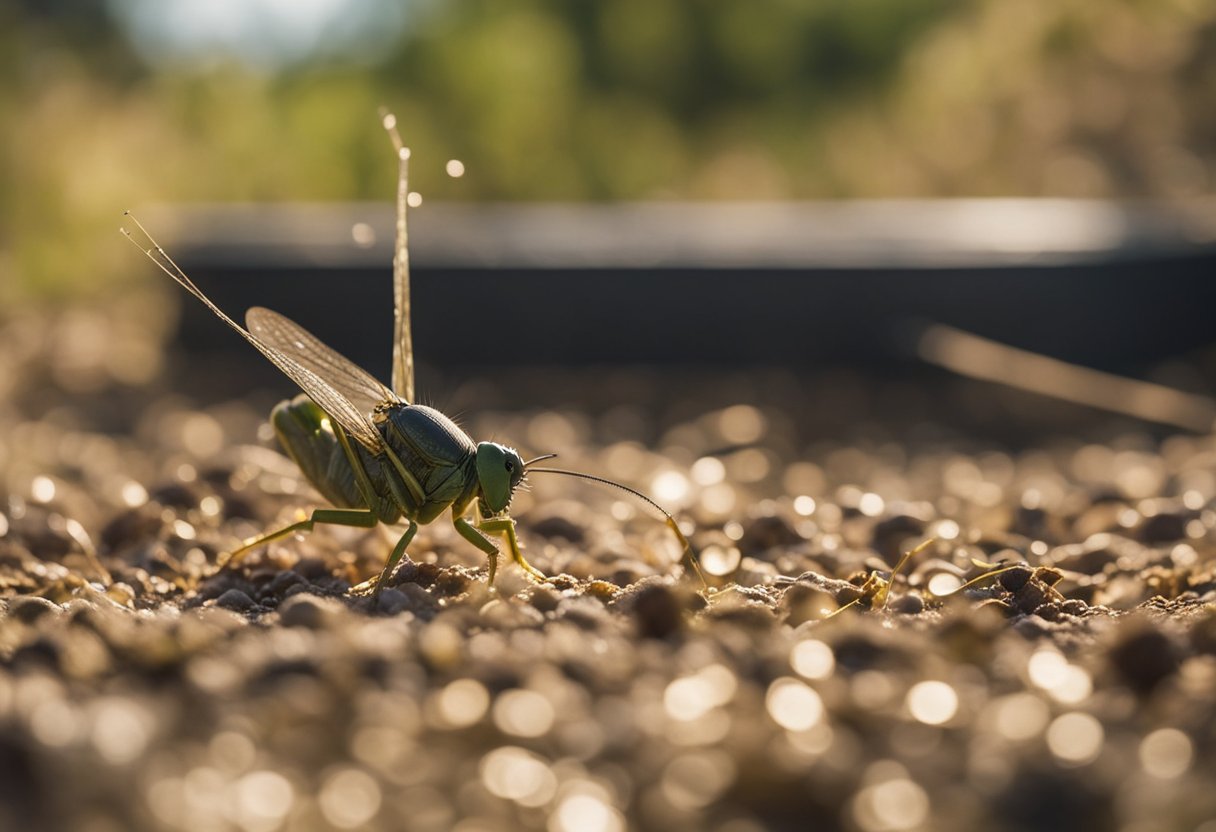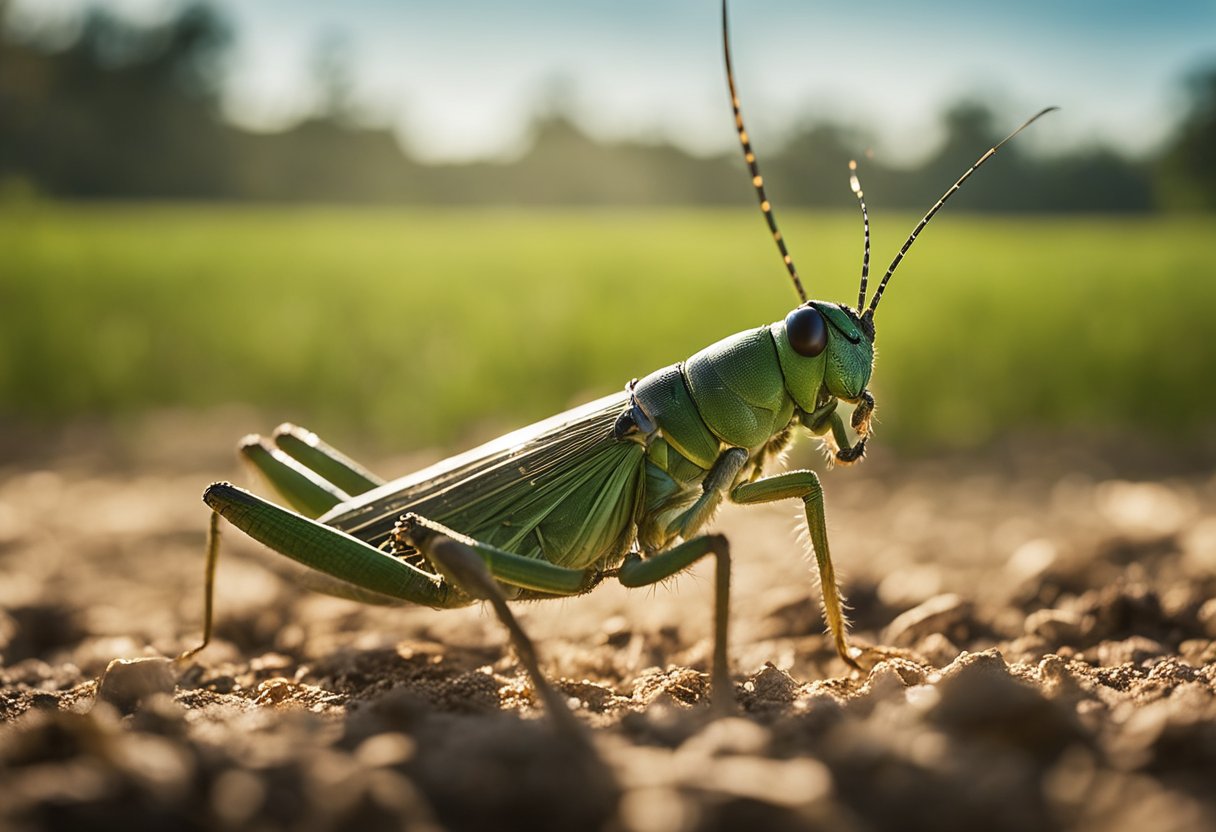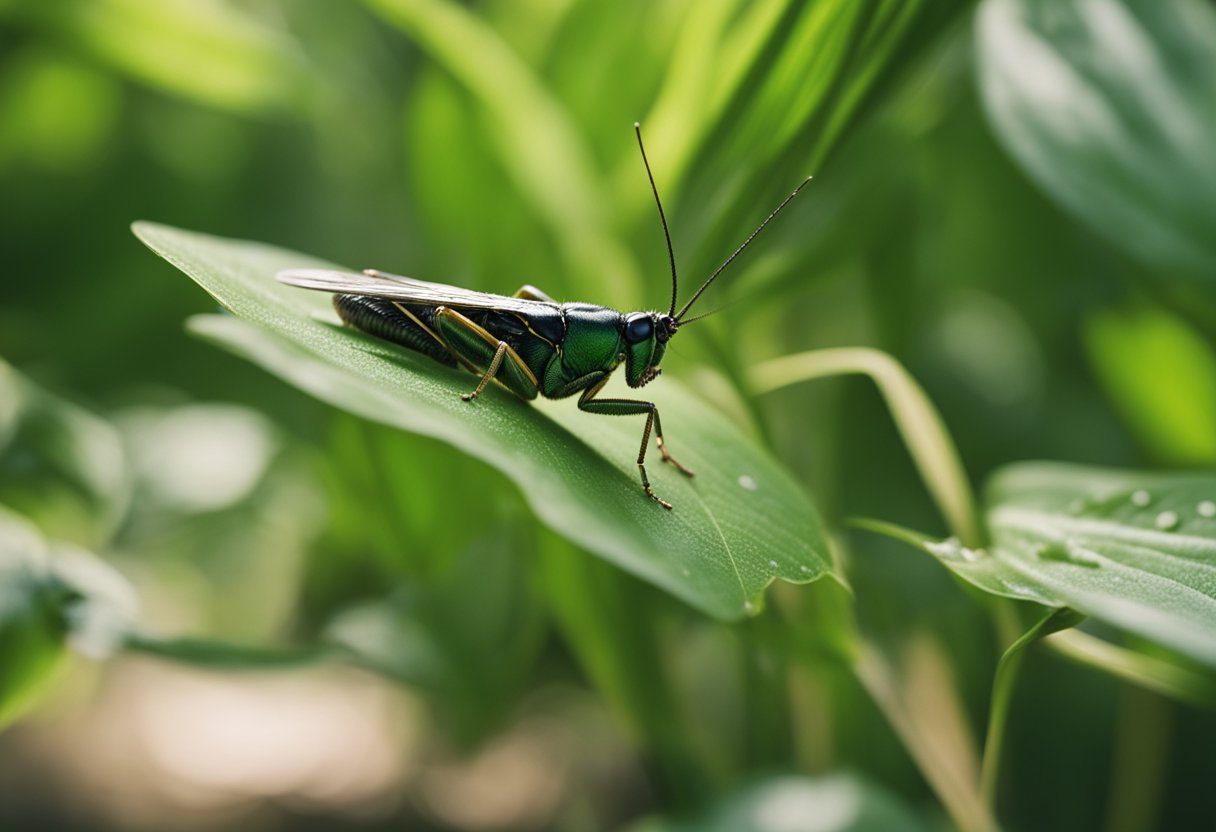Bait fishing with crickets is an effective method used by anglers around the world to attract a range of fish species. The technique hinges on the natural appeal of live insects as prey for fish, tapping into their instincts for a high-chance of a successful catch. Anglers favor crickets due to their active movement and noise, which can entice fish more than static baits.

In preparing crickets for bait, the selection and hooking methods play crucial roles in the efficacy of this technique. It’s important to use a suitable hook and attach the cricket in a way that maximizes its natural movements without causing it to perish too quickly. For line selection, a monofilament or fluorocarbon line of 6 to 10 pounds is often recommended for its balance of strength and invisibility underwater.
Understanding when and where to employ cricket baiting techniques is fundamental for any angler. Not all environments or conditions are conducive to their use, and missteps in handling crickets can lead to common mistakes such as quick bait loss or reduced effectiveness. Knowledge of the nuances of cricket baiting can make a significant difference in fishing outcomes.
Understanding the Basics of Cricket Baiting
Effective cricket baiting begins with a comprehensive understanding of the targeted species and their natural preferences, along with the correct usage of baiting tools. Mastery of these fundamentals allows for successful cricket management in various environments.
Cricket Species and Preferred Habitats
Cricket baiting involves identifying specific cricket species and understanding their preferred habitats. Common crickets, like the house cricket (Acheta domesticus), favor warm environments and often reside in fields, yards, and within buildings. They are particularly drawn to areas where there are abundant food sources and protective hiding spots, such as cracks and crevices. Knowledge of these preferences is essential for effective baiting strategies.
Essential Equipment and Tools for Baiting
To bait crickets effectively, one requires the appropriate tools. The primary tool is baiting food, which should be appealing to the crickets yet safe for the surrounding environment. Along with food baits, tools such as bait stations and traps are crucial. Bait stations should be placed strategically in areas frequented by crickets to increase the chances of success. The use of hand lenses or magnifiers can also aid in identifying the insects and assessing the effectiveness of the baiting strategy.
The Do’s of Cricket Baiting
Cricket baiting can greatly enhance a fisher’s success when done correctly. It requires simple, yet precise techniques to attract fish and keep the bait active and enticing.
Optimal Placement of Bait
When baiting with crickets, one must understand the importance of proper placement. Crickets should be hooked in a way that allows them to move naturally, hence attracting more fish. A cricket’s thorax, the area right behind the head, is an optimal hooking point. This preserves the cricket’s natural movement while ensuring it remains securely on the hook. For topwater fishing, where fish feed off the surface, lighter rigs are advisable to prevent the cricket from sinking.
Bait Selection and Usage
Selecting the correct size of the cricket is crucial for matching the type of fish targeted. Size does matter; the cricket must be proportionate to the mouth size of the fish species in question. Fishermen should use fresh, lively crickets for the best results, as their natural movement is more likely to attract fish. Dead or immobile crickets do not provide the same level of attraction and are less effective.
Monitoring and Maintaining Bait Stations
Those who use crickets as bait must be attentive to their bait stations, ensuring crickets remain active. The bait station should be shaded and cool to prevent crickets from becoming lethargic due to heat. Monitoring the bait station is also a key aspect of success; one should routinely check to make sure there are enough crickets and that they are in good condition for baiting. Regular checks are part of the process to guarantee that the bait remains appealing to the fish throughout the fishing session.
The Don’ts of Cricket Baiting

When using crickets for bait, it’s crucial to avoid common errors, harmful practices, and any action that goes against legal or ethical guidelines.
Common Baiting Mistakes
Making the right choices in baiting style can be as important as having the right tackle. They should never hook crickets in a way that inhibits their natural movement; a live cricket’s movement is vital for attracting fish. Anglers should avoid using an improper size hook, as too large a hook will weigh down the cricket, and too small a hook may not secure the bait properly.
- Avoid:
- Overcrowding hooks with multiple crickets.
- Using hooks that are too small or large for the cricket.
Avoiding Harmful Practices
One must not use crickets that have been exposed to pesticides, as this poses a risk to the water ecosystem and the fish themselves. It is also imperative to not discard unused crickets into the wild, as this may introduce non-native species, potentially harming the local environment.
Highlights:
- Do not use crickets exposed to pesticides.
- Do not release crickets into non-native habitats.
Legal and Ethical Considerations
Every angler has a responsibility to familiarize themselves with and adhere to the local fishing rules and regulations, which may dictate the legal use of live bait. There is also an ethical obligation to give fish an opportunity to escape, thus not impairing crickets to a degree that they cannot move in the water.
- Key Points:
- Always check local regulations before using live crickets as bait.
- Ensure ethical fishing practices by allowing crickets some degree of mobility.
Advanced Techniques and Strategies
These techniques are crafted to integrate the cricket’s inherent behavior with inventive baiting methods, designed to elevate a fisherman’s success rate significantly.
Leveraging the Cricket’s Natural Behavior
To effectively leverage the cricket’s natural behavior, anglers must recognize the two modes in which crickets operate: active and passive.
- Active Technique: When crickets swim vigorously, they attract more attention. Mimicking this behavior by gentle twitches in the fishing line can be an effective strategy to stimulate a bite.
- Passive Presentation: In contrast, allowing the cricket to float naturally with the current often appeals to fish due to the cricket’s subtle movements, making it resemble their usual prey.
Innovative Baiting Methods
Innovative baiting calls for the meticulous preparation and presentation of crickets to tempt even the most discerning fish.
Correct Hooking:
- Hook Size: 6-8 is optimal.
- Placement: Gently hook crickets through the thorax for minimal damage and maximum movement.
Stealth Delivery:
- Cast near vegetation or shelter, where fish expect live crickets to fall.
- Use a light line, like 6-10 pound test mono or fluoro, to maintain a low profile and avoid spooking the fish.
Beyond Baiting: Creating a Long-Term Cricket Management Plan
Effective cricket baiting is just a piece of the puzzle. For long-term cricket management, environmental modifications and integrated pest management strategies are crucial to ensure a sustainable approach, especially important for avid cricketers preserving their field’s conditions and preventing unwanted nuisances.
Environmental Modifications
Cricket nests can become a problem if not managed correctly. They are typically located in moist areas, often hidden from sight. To minimize nesting opportunities, it’s essential to alter the environment:
- Reduce Moisture: Ensure proper drainage around the field to prevent moisture accumulation that might attract crickets. This is especially pertinent in spring, when cricket activity peaks.
- Night Lighting: Crickets are attracted to bright lights at night. Minimize outdoor lighting or switch to low-pressure sodium vapor lamps or LED lights, which are less enticing to crickets.
Integrated Pest Management Approach
An Integrated Pest Management (IPM) approach combines various methodologies to keep cricket populations at bay:
- Monitoring: Regularly inspecting the field and surrounding areas helps detect cricket activity early, allowing for timely interventions.
- Natural Predators: Encourage the presence of predators like birds or non-venomous spiders that contribute to the natural web of control, keeping cricket numbers in check.
- Exclusion Techniques: Seal gaps and cracks in structures to deter crickets and rodents, which can also be problematic.
- Chemical Controls: If necessary, the judicious use of appropriate pesticides should be considered as a last resort, ensuring the highest level of safety and effectiveness without adversely affecting non-target species.
Cricket Baiting and Overall Ecosystem Health

Cricket baiting as a practice can bear significant consequences for local ecosystems. It is vital that individuals employ sustainable methods to ensure ecological balance while partaking in this activity.
Crickets as Pests vs. Indicators: While crickets can sometimes be considered pests, especially when they invade fields and homes, they also play a role as bioindicators in the ecosystem. Their presence and chirping patterns can signal the ecological health of an area.
Sustainable Cricket Harvesting: For baiting, crickets should be harvested sustainably. Overharvesting can deplete local populations, which in turn affects the food chain. Predators such as bats, which can consume up to their body weight in insects and can fly at considerable speeds, rely on healthy cricket populations.
Use of Tools in Harvesting: When gathering crickets, one must use tools that do not harm their natural habitat. The destruction of cricket habitats can lead to a decrease in soil quality and plant health in the field.
Feeding Practices: Crickets used for bait should be fed appropriate food to ensure they are healthy, which, in turn, makes them more effective as bait. Contaminated or poor-quality cricket food can affect both the crickets and the predators that consume them.

